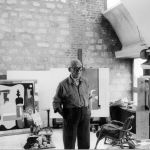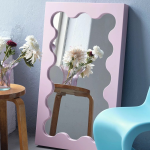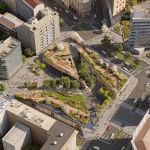
Le Corbusier's Paris apartment reopens
Where the painter and revolutionary architect has lived for thirty years between functionality and natural light.
November 25th, 2018
After two years of restoration, the famous Le Corbusier house-studio reopens to the public inside the Immeuble Molitor. The space in the 16th arrondissement of Paris, in which the revolutionary painter and architect lived and designed from 1934 until 1965, together with his wife Yvonne, the housekeeper and the dog Pinceau, is not only UNESCO world heritage, but also represents the perfect example of his work and his design ideas. The focus? Importance of light and functionality.
Crossing the threshold of the apartment, in fact, the main features are that you notice inside are the great natural light that enters from the glass walls or the different skylights and the absence of partitions, except for the mobile elements, such as large rotating doors, which separate the various rooms without isolating them. The 240 m² house occupies the last two floors (seventh and eighth) of the building located along Nungesser-et-Coli: in one we find a living room, a dining room, a bedroom-bathroom and a kitchen, served by the same entrance; while, at the superior, a guest room and a hanging garden. All rooms enclosed by squared walls that alternate squared surfaces, soft and curved, made unique by touches purist colors. It is one of the classic signatures of Le Corbusier's style, scattered around with exposed bricks and breeze blocks taken from the adjacent buildings and furnishings such as the LC4 chaise-longue or the bed with support legs are much higher than normal, designed with the dual function of a resting object, but also a privileged observatory to enjoy the view overlooking the Bois de Boulogne.
A fun fact: the Immeuble Molitor, built by Le Corbusier with cousin Pierre Jeanneret between 1931 and 1934, was the first ever residence to have an entirely glass façade, a combination of horizontal sliding panels and translucent glass blocks.


































































